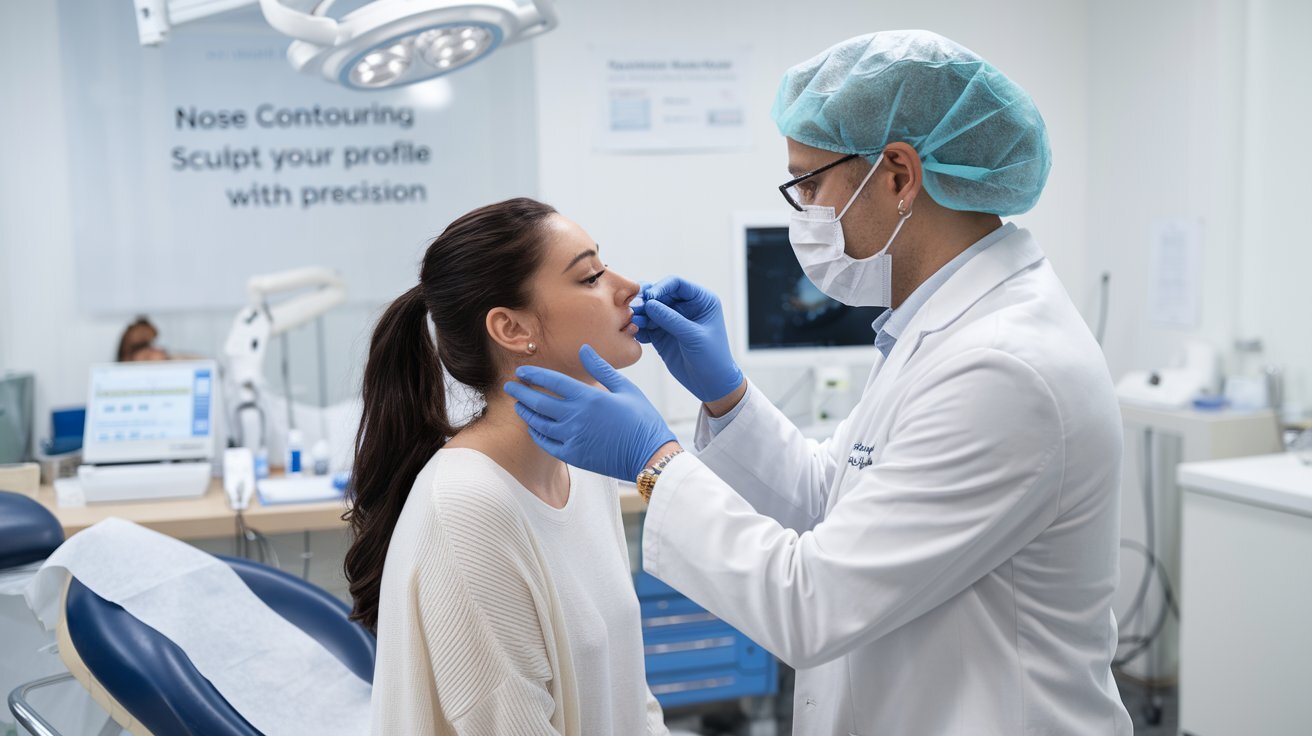Nose Contouring Surgery: Sculpt Your Profile with Precision
Nose contouring surgery, often referred to as rhinoplasty, is a transformative procedure aimed at enhancing the aesthetic appeal of the nose. This surgical intervention not only focuses on the external appearance but also plays a crucial role in improving the overall facial harmony and symmetry. Whether you are looking to refine the size, shape, or structure of your nose, understanding the intricacies of nose contouring surgery is essential for making an informed decision.
Individuals seeking this procedure are typically motivated by a desire for a more balanced profile. The nose is a central feature of the face, and its proportions significantly affect one's overall appearance. In this article, we will delve into the various aspects of nose contouring surgery, including the techniques involved, potential risks, recovery process, and the expected outcomes.
Understanding Nose Contouring Surgery
Nose contouring surgery is designed to reshape the nose to achieve a more aesthetically pleasing look. This may involve altering the size or shape of the nasal tip, bridge, or nostrils. The procedure can be performed using various techniques, including open and closed rhinoplasty, each offering unique advantages depending on the specific requirements of the patient.
Types of Nose Contouring Techniques
- Open Rhinoplasty: This technique involves making a small incision on the columella, the strip of tissue between the nostrils. It provides the surgeon with better visibility and access to the nasal structures, allowing for more extensive modifications.
- Closed Rhinoplasty: In this approach, all incisions are made inside the nostrils. This technique minimizes visible scarring and is typically used for less complex reshaping.
- Non-surgical Contouring: For those hesitant about surgery, non-surgical options like dermal fillers can temporarily enhance the nose's shape. However, the results are not permanent and require maintenance.
Benefits of Nose Contouring Surgery
The primary goal of nose contouring surgery is to enhance facial symmetry and proportion. Some of the key benefits include:
- Improved Aesthetic Appeal: A well-contoured nose can significantly enhance one's facial features, leading to increased self-confidence.
- Correcting Structural Issues: Nose contouring can address congenital deformities or injuries that may affect breathing or overall function.
- Long-lasting Results: Unlike non-surgical options, surgical rhinoplasty offers permanent changes, making it a worthwhile investment for many individuals.
Risks and Considerations
As with any surgical procedure, nose contouring surgery carries certain risks. These may include:
- Infection: Post-operative infections can occur, though they are rare.
- Scarring: While techniques are designed to minimize visible scarring, some patients may still experience noticeable scars.
- Unsatisfactory Results: There is a possibility that the results may not meet the patient's expectations, leading to the need for revision surgery.
The Recovery Process
Recovery from nose contouring surgery varies among individuals but generally involves the following stages:
- Initial Healing: Patients may experience swelling and bruising for the first week. Pain management will be essential during this period.
- Follow-Up Visits: Regular check-ups with the surgeon are crucial to monitor healing and address any concerns.
- Gradual Results: While some changes will be apparent shortly after surgery, final results can take several months to fully materialize as swelling subsides.
Conclusion
Nose contouring surgery is a highly effective way to achieve a more balanced and aesthetically pleasing profile. By understanding the procedure, its benefits, and the recovery process, patients can make informed decisions that align with their personal goals. If you are considering this transformative surgery, consulting with a qualified plastic surgeon is essential to discuss your options and develop a tailored plan that meets your needs.
FAQ
1. How long does nose contouring surgery take?
The procedure typically takes between 1 to 3 hours, depending on the complexity of the surgery.
2. Will I have visible scars after the surgery?
While every effort is made to minimize scarring, some patients may have minor scars, especially with open rhinoplasty.
3. How soon can I return to normal activities after the surgery?
Most patients can return to light activities within a week, but strenuous activities should be avoided for several weeks.
4. Is nose contouring surgery painful?
Patients may experience discomfort, but pain is generally manageable with prescribed medications.
5. What should I expect during the consultation?
Your consultation will include a discussion about your goals, a physical examination, and an overview of the surgical options available to you.
Medical Disclaimer
The information provided in this article is for informational purposes only and should not be considered a substitute for professional medical advice, diagnosis, or treatment. Always seek the advice of your physician or another qualified health provider with any questions you may have regarding a medical condition or treatment. Never disregard professional medical advice or delay in seeking it because of something you have read in this article.
If you are considering nose contouring surgery and are experiencing dissatisfaction with your current nose shape, we encourage you to consult with a qualified surgeon to explore your options further.
